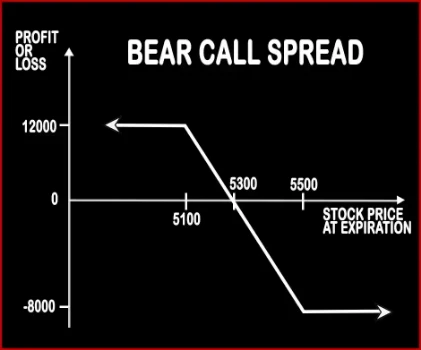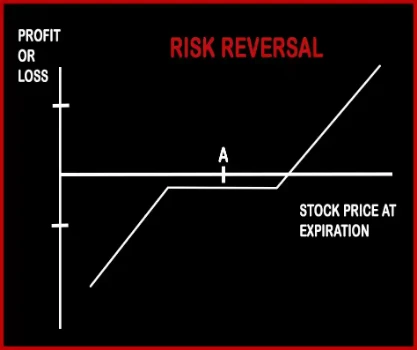Compare Strategies
| BEAR CALL SPREAD | RISK REVERSAL | |
|---|---|---|

|

|
|
| About Strategy |
Bear Call Spread Option StrategyBear Call Spread option trading strategy is used by a trader who is bearish in nature and expects the underlying asset to dip in the near future. This strategy includes buying of an ‘Out of the Money’ Call Option and selling one ‘In the Money’ Call Option of the same underlying asset and the same expiration date. When you write a call, you receive premium thereby r |
Risk Reversal Option StrategyThis strategy protects an investor from unfavourable price movements in the position but limits the profits can be made on that position. A risk reversal is a hedging strategy that protects a long or short position by using put and call options. In this one option is buying and other is written. In this strategy the trader has to pay a premium, while the written option prod .. |
BEAR CALL SPREAD Vs RISK REVERSAL - Details
| BEAR CALL SPREAD | RISK REVERSAL | |
|---|---|---|
| Market View | Bearish | Bullish |
| Type (CE/PE) | CE (Call Option) | CE (Call Option) + PE (Put Option) |
| Number Of Positions | 2 | 2 |
| Strategy Level | Beginners | Advance |
| Reward Profile | Limited | Unlimited |
| Risk Profile | Limited | Unlimited |
| Breakeven Point | Strike Price of Short Call + Net Premium Received | Premium received - Put Strike Price |
BEAR CALL SPREAD Vs RISK REVERSAL - When & How to use ?
| BEAR CALL SPREAD | RISK REVERSAL | |
|---|---|---|
| Market View | Bearish | Bullish |
| When to use? | This strategy is used when you are bearish in market view. The strategy minimizes your risk in the event of prime movements going against your expectations. | This strategy can be used for hedging. When an investor want to protect long or short position by using a call and put option. |
| Action | Buy OTM Call Option, Sell ITM Call Option | This strategy work when an investor want to hedge their position by buying a put option and selling a call option. |
| Breakeven Point | Strike Price of Short Call + Net Premium Received | Premium received - Put Strike Price |
BEAR CALL SPREAD Vs RISK REVERSAL - Risk & Reward
| BEAR CALL SPREAD | RISK REVERSAL | |
|---|---|---|
| Maximum Profit Scenario | Max Profit = Net Premium Received - Commissions Paid | You have unlimited profit potential to the upside. |
| Maximum Loss Scenario | Maximum Loss = Long Call Strike Price - Short Call Strike Price - Net Premium Received | You have nearly unlimited downside risk as well because you are short the put |
| Risk | Limited | Unlimited |
| Reward | Limited | Unlimited |
BEAR CALL SPREAD Vs RISK REVERSAL - Strategy Pros & Cons
| BEAR CALL SPREAD | RISK REVERSAL | |
|---|---|---|
| Similar Strategies | Bear Put Spread, Bull Call Spread | - |
| Disadvantage | • Limited amount of profit. • Margin requirement, more commission charges. | Unlimited Risk. |
| Advantages | • This strategy takes advantage of time decay. • Investors can get profit in a flat market scenario. • Investors can earn options premium income with a lower degree of risk. | Unlimited profit. |